There aren’t many sub-$50k seven-seat heavy-duty 4x4s on the market at the moment. In fact, the 2014 Isuzu MU-X is part of a rare breed of just two, and it’s only rival is its brother.
The Isuzu MU-X, as cryptic as the name sounds, is the twin brother to the humble Holden Colorado 7. It shares the same underpinnings developed in part by parent company GM, and it’s made in Thailand just like the Holden.
So, what’s the difference between the two? Aside from the badge, the Isuzu’s price range is a few steps down. Equipment levels are more to the premium side in the Holden, while the MU-X is more about simplicity and ease of use. The Holden also comes with a more powerful 2.8-litre turbo-diesel.
The MU-X range spans from the LS-M (as tested), the LS-U, to the range-topping and somewhat luxurious LS-T. All models are available with either a heavy-duty four-wheel drive system or a more economical rear-wheel drive setup. All models are also presented with seven seats.
Prices for this automatic 4×4 version kick off at $47,800, with the base model 2WD starting at $40,500.
2014 Isuzu MU-X LS-M – THE SPECS
[column width=”47%” padding=”6%”]Engine: 3.0-litre turbo-diesel four-cylinder
Output: 130kW@3600rpm / 380Nm@1800-2800rpm
Transmission: Five-speed auto
Drive type: Part-time four-wheel drive
Wheels: F: 16×7.0, 245/70 R: 16×7.0, 245/70
ANCAP: Five stars (scored 33.58 out of 37)
Kerb weight: 2000kg[/column] [column width=”47%” padding=”0″]Power-to-weight: 15.3:1 (kg:kW)
Official fuel economy: 8.4L/100km
Economy during test: 8.7L/100km
Fuel capacity/Type: 65L/Diesel
Power efficiency: 15.4kW:L/100km
0-100km/h as tested: 10.6 seconds
Priced from: $47,800[/column][end_columns]
2014 Isuzu MU-X LS-M – THE PACKAGE
You probably know Isuzu as more of a truck brand, but the truth is, Isuzu has been building passenger cars for a long time. Do you remember the old Holden Gemini (rear-wheel drive version) from the 1980s? Well, that was actually an Isuzu underneath.
It comes as no surprise the company knows how to make a user-friendly interior. That’s what the MU-X is all about. There is some modern style to the dash fascia and you can get sat-nav and various other technologies when you opt for the LS-T. But here with the base model, it’s back-to-basics motoring.
Standard features read like a car advertisement from the late 1990s. The headlines are (in your best radio voice) power windows, power steering, power side mirrors, air-conditioning, and cruise control. You also get cup holders for all three rows, a trip computer, and a six-speaker stereo with MP3 and Bluetooth support.
It’s not trying to be better than what it is. It is perhaps the least pompous vehicle on the market. And you tend to warm to it for that reason. The seats are comfortable and simple to adjust. The driving position is near enough to ideal for this segment, and most of the controls are within arm’s reach.
We like the big control knobs and manly character of most of the fixtures, and the way most of the dash functions are up high so you don’t need to divert your attention too far from the road ahead. However, we’re not so much a fan of the thick plastics used for most of dash and door trims. Some of the highlight silver bits are quite tacky as well.
Seating space is excellent, especially in the first two rows. Legroom in the second row is open and free, and the general environment seems airy with good visibility all around.
The third row seat is more confined, as you would expect. Adults can ride back there but legroom is a bit tight due to the lack of a proper foot well. Isuzu says there is 915mm of legroom in the second row and 815mm in the third row. Conveniently, the second row is adjustable for backrest tilt.
In the very back there is 235 litres of cargo space in the seven-seat layout. With all rear seats down there is an impressive 1830 litres.
Now that we’ve established it can perform quite well as an everyday car, how does it shape up when it comes to heavy-duty performance? After all, that’s what the brand is renowned for, right?
All models come with snorkelled differentials to ensure everything stays sealed and dry when fording through deep water crossings. LS-M models feature a 220mm ground clearance too, while the higher spec LS-U and LS-T offer 230mm.
There’s a 29.5-degree approach angle at the front and 24.6-degree departure angle at the rear, which means it’s ready to climb over some pretty serious ditches and up some seriously steep inclines. All of these specs prepare it for proper off-road use.
2014 Isuzu MU-X LS-M – THE DRIVE
Like the interior, the MU-X is easy to operate. Your grandma could drive this with no major complaint. This is quite a bonus considering how prepared it is for rugged off-road use.
The steering is communicative enough and the transmission, while only a five-speed auto, does well to make use of the 380Nm of torque produced by the engine.
Around tight roundabouts it can be a tad tiring due to the amount of turns from lock to lock from the steering rack, although, the rack gearing isn’t as exhaustive as it is in some other ute-based SUVs.
Out on the road the MU-X’s turning behaviour is mostly flat with a bit of body wobble and lean – some of which is due to the tall tyres. When you encounter some bumps or corrugations in the road the suspension will shudder, accompanied by some bump-steer. Again though, for this type of vehicle it’s nothing out of the ordinary.
As for the engine performance, well, let’s just say it leisurely gets up to speed. We timed 0-100km/h in a fairly somber 10.6 seconds. The engine only offers a small optimum-torque window, hitting its peak figure of 380Nm between 1800rpm and 2800rpm. Peak power is just 800rpm away, at 3600rpm. This means the transmission only has a short time to wind out before the revs climb too high. A six-speed auto might improve this if it were offered.
The engine is quiet and fairly relaxing in the way it operates. It doesn’t complain about its small torque window, and it seems to communicate well with the transmission to make sure the drive is as effortless as it can be.
Enough of the on-road duties though. The MU-X is built to go off road. And out here it’s like a pig rolling in the mud. Even though its 220mm ground clearance is not particularly leading the class, everything under the vehicle is tucked up and kept away from protruding objects. 220mm is the lowest point. This means the diff could be the lowest point while the rest of it could be much higher. And it seems that way.
At Yawal Creek we put the MU-X through some pretty serious tests. None of the terrain was overwhelming for the MU-X. It climbs effortlessly over pointy ridges and clears rocks and logs with ease. We were a bit disappointed not to see a ‘diff lock’ button in the cabin, but on test, it didn’t really need such function.
As a bonus the four-wheel drive system is selectable on the fly at speeds up to 100km/h. You can save a lot of fuel by leaving it in rear-wheel drive mode around town. We averaged 8.7L/100km during our drive, which is not far off the official 8.4L/100km average. There aren’t many seven seaters that can offer such economy.
2014 Isuzu MU-X LS-M – THE VIDEO
2014 Isuzu MU-X LS-M – THE VERDICT
So it’s a little bit crude and a little bit utilitarian. If you’re after an SUV, specifically, a seven-seat SUV that can carry the whole family into some of the most remote regions of Australia, the Isuzu MU-X is simply the best value proposition on the market. Bar none.
It’s highly capable, strong, fuel efficient, and it’s made by a company that has decades of experience building heavy-duty diesel trucks. Be sure to at least test drive one before signing the dotted line on any other seven-seat reasonably-priced SUV.
[column width=”47%” padding=”6%”]PROS:
– Very robust, industrial-strength powertrain
– Surprisingly fuel efficient
– Plenty of room
– Price
– Off-road performance
[/column] [column width=”47%” padding=”0″]CONS:
– Crude plastics inside
– No diff lock or limited-slip diff
– A bit slow[/column][end_columns]
2014 Isuzu MU-X LS-M – THE COMPETITORS
Ford Territory TS AWD (seven seats)
2.7-litre turbo-diesel V6 – 140kW-440Nm – 8.8L/100km – 2144kg – from $55,990
Holden Colorado 7 (seven seats)
2.8-litre turbo-diesel four-cylinder – 147kW-500Nm – 9.2L/100km – 2170kg – from $47,490
Jeep Grand Cherokee Laredo (five seats)
3.0-litre turbo-diesel V6 – 184kW-570Nm – 7.5L/100km – 2267kg – from $53,000
Mitsubishi Challenger (five seats)
2.5-litre turbo-diesel four-cylinder – 131kW-400Nm – 8.3L/100km – 1990kg – from $42,490
Mitsubishi Pajero (seven seats)
3.2-litre turbo-diesel four-cylinder – 147kW-441Nm – 8.4L/100km – 2347kg – from $55,990
Toyota Prado GXL (seven seats)
3.0-litre turbo-diesel four-cylinder – 127kW-410Nm – 8.5L/100km – 2320kg – from $63,720 (auto)
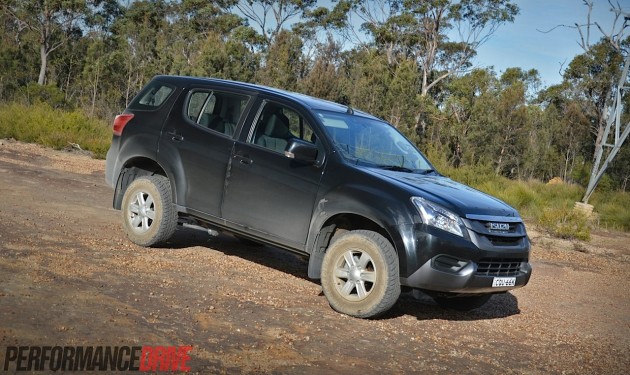
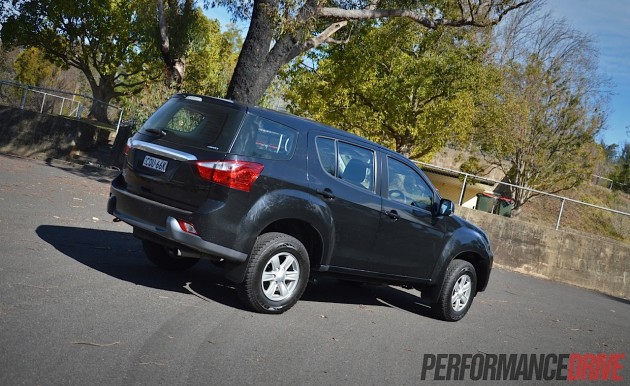
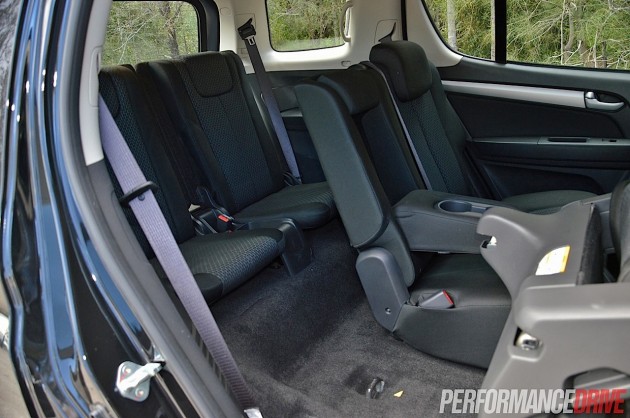
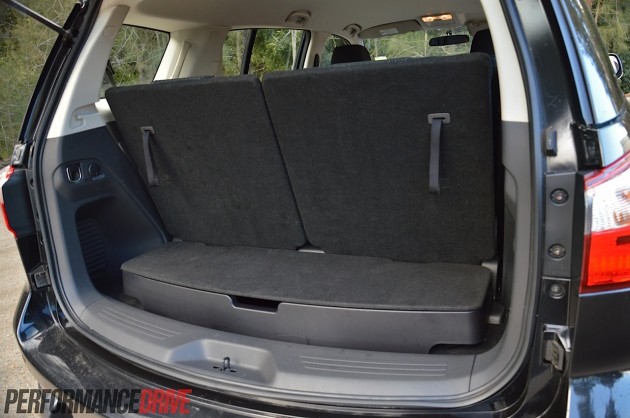
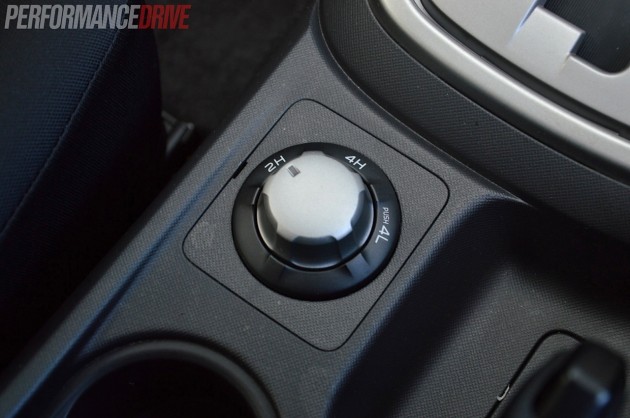
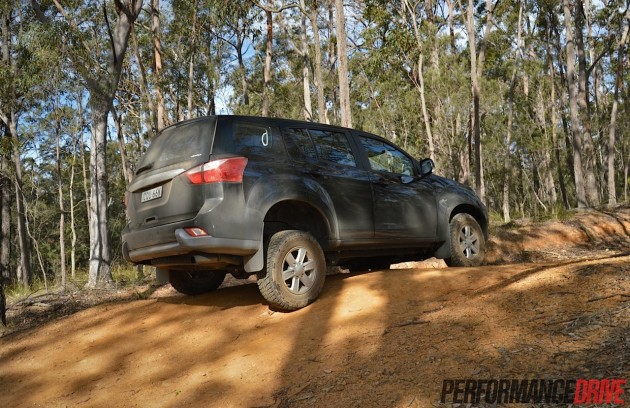
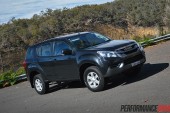
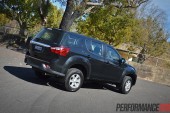
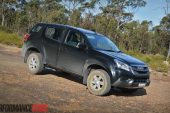
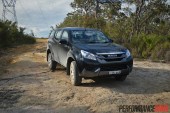
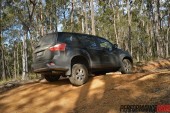
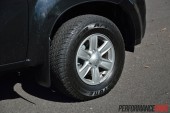
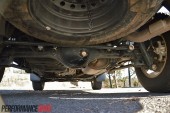
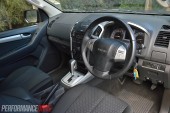
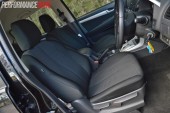
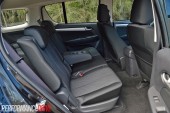
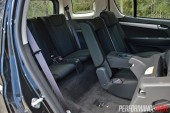
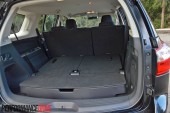
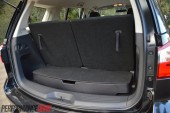
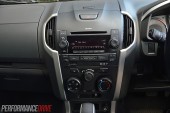
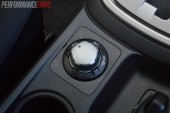
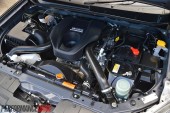
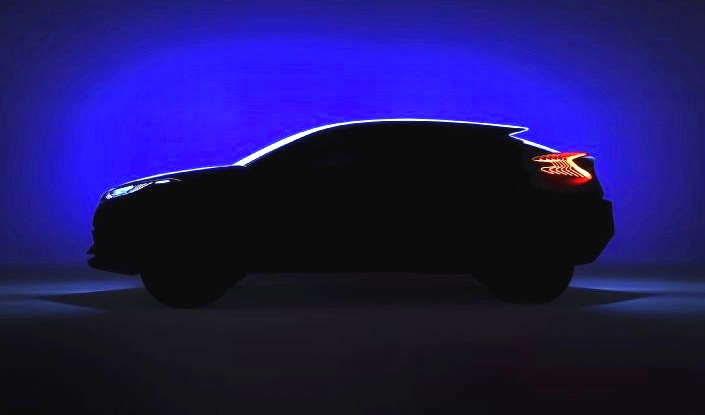
I note your closing remark about the mux being the best value proposition…bar none. Is this still the case, and in particular with 2015 models just around the corner?
Hi Brett your interesting write is generally good however you point out that the revs run out quickly on the five speed auto– suggesting six speed option—- This does not make sense– with an extra gear ratio you will wind each gear out quicker—-Example If it was an old 3 speed you would take your time to wind them out– for example.
The reason for five speeds is the fact this engine has a big fat wide spread torque figure.
What’s important is this engine produces over 70 percent of its torque at a mere 1000 Rpm.
Think about it…. if you are towing– how’s that for an easy get up and go? Low stressed to the max…Or get yourself stuck in heavy sand– just pump the foot down and this engine will immediately respond and pull itself out of trouble.
Try these two scenarios with a six speed Navara,–Now six speeds and a peaky motor will not help you pull from idle up– infact the stresses are far greater with the six speed scenario and a peaky engine. You would need to flog the engine to get it up on the revs to start working—hmm torque converter heats up, economy is shot– not very enjoyable.
So what if your engine has 140 Kw— who buys a 3 litre diesel, tows with it and keeps it at 4000 revs to get this– no one– The fact remains in 90 pct of the time your diesel will be used in the most important rev range of 1000 to 2000 rpm and that’s where you want the torque.
I understand the engine that you tested and while it doesn’t spin out like some diesels, is not a fault it is in fact the engineers intension and this engine does command great control and authority over its transmission and drivetrain never lacks in doing serious sustained heavy work all day.
The traction control system the auto has easily out performs the previous DMax’s LSD. So even though it does not have a difflock or LSD, as you found you never got into a situation to call upon that feature. So all in all the designers have improved the drive train for the DMax and Mux whilst improving the drive quality.
All in all this is one car that has been very well engineered and time will see this formula catch on.
I can’t put my finger on a better vehicle in this class for value and sheer fun with incredible 4 wd capability.
Nice review Brett. Will help with a purchase. FYI GM is not Isuzu’s parent company. Isuzu is its own company. Cheers